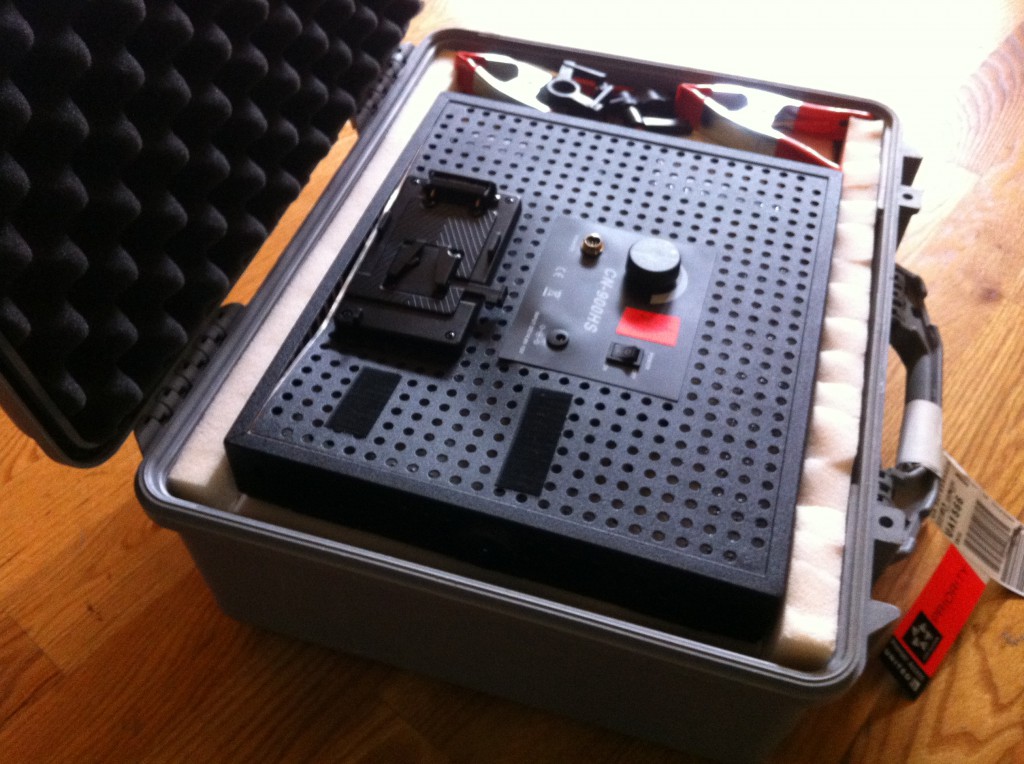
I just returned from a week of shooting in a remote part of Alaska, a trip that I unfortunately can’t talk about because of a client non-disclosure agreement. But what I CAN talk about is a few lessons I learned about equipment: what gear to take, what NOT to take, and how to pack it.
First up: I want to talk about CN-900 LED lights, after I found this note waiting this morning from one of my blog readers, Jason:
“Dan, What kind of a case do you use to pack these up? The soft cases leave a lot to be desired.”
I packed both of my CN-900 lights on this trip, and ended up using only one of them. Lesson: One LED panel goes a long way when you’re on the road, working in stressful conditions where you have to set up quickly. I was relying on these lights to fill and augment the already existing light, so one light turned out to be enough. But I was glad I had the second one, just in case.
I have a Pelican 1550 case, and discovered that by removing the padded dividers and adding some 1″ foam that I picked up at Fred Meyer, I was able to fit both lights and their cords. But this required unscrewing the yokes and packing them separately, as they were too big to fit. This was a minor inconvenience, because it takes a minute to screw the yokes back on before the lights are ready for use. But what happens if you misplace the yokes? Luckily, that didn’t happen. But I’d really prefer to have all of the lights in one case, ready to go as soon as they are pulled out. And, I had to leave the assembled light out of the case when I was using it, because it was too big to fit back into the case once assembled. But this was offset by the fact that the 1550 is a nice small case.
One of the best things I did before the trip was to rent a powerful V-mount battery to power one of the lights. It made using the light massively easier than having to carry an extension cord and hunt for plug in ever time I needed to set up. Being untethered was the difference between using and not using the light on more than one occasion.
I have a rule: ALWAYS use a sand bag when placing a light on a stand. But because I was traveling, I decided paying an airline to ship sand didn’t make any sense, and that I would just be extra careful. Guess what? I backed into the light while moving around my subject filming. And the light, which was extra top-heavy because of the heavy battery, went crashing to the floor. Amazingly, it continued working. But it left a big dent in the light’s metal housing (see photo).
One thing about this incident: it speaks highly of the construction build of the CN-900. I once dropped a LitePanel Micro Pro about 2 feet onto a hardwood floor, and it died instantly. I had to send it back to LitePanels for repair, which they didn’t charge me for, but nevertheless, I was without the light for about 10 days. The CN-900 took a severe beating and kept working.
How are you handling the Low CRI? I have the same unit and I found the skin tone to be very pail under these units even with Half minus Green.
Thanks
Hi Val,
I don’t tend to notice the low CRI as long as I’m not mixing these lights with other set lights, such as tungsten, or daylight fluorescents. It’s in those mixed environments that I find they don’t hold up, because they are difficult to color match (you can’t simply add a full CTO to match tungsten, for example – it’s more like 3/4 CTO and 1/4 minus green.) But your point is well taken – these are not high CRI lights, so if you’re in a color-critical shoot, I would avoid them.